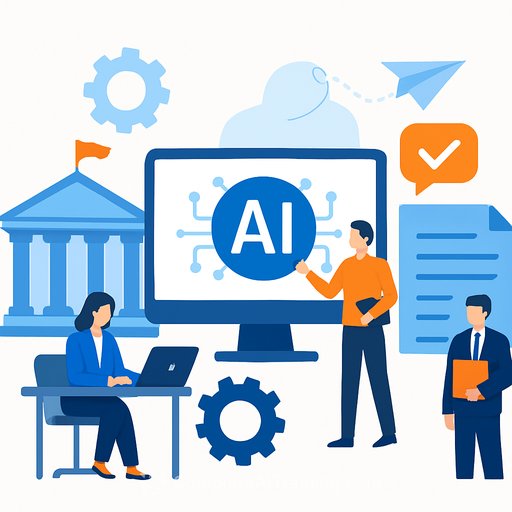AI-Driven Security Operations
Businesses today operate beyond traditional physical boundaries. With hybrid clouds, remote work, IoT ecosystems, and distributed supply chains, attack surfaces have expanded dramatically. Cybercriminals use tactics like ransomware, social engineering, supply chain attacks, and zero-day exploits faster than ever before. Traditional security operations centers (SOCs) relying on manual monitoring and static rules can’t keep up.
That’s where AI-driven security operations come in. They automate threat detection, speed up investigations, and coordinate rapid responses to evolving cyber threats. This approach combines artificial intelligence, machine learning, and dynamic threat modeling to improve security resilience while reducing reliance on human intervention.
What Are AI-Driven Security Operations?
AI-driven security operations modernize SOCs by using AI, machine learning, automation, and data analytics to handle growing cybersecurity challenges. Unlike legacy systems that require constant manual oversight, AI-powered SOCs can:
- Continuously analyze vast data from endpoints, cloud services, and networks.
- Detect anomalies and threats in real time, including those outside known attack signatures.
- Automate triage and response, cutting down mean time to detect (MTTD) and mean time to respond (MTTR).
- Predict attacks using behavioral models and threat intelligence.
This shifts cybersecurity from reactive to proactive, helping organizations anticipate and prevent attacks.
Why Traditional Security Models Fall Short
Many organizations still depend on legacy SIEMs or siloed tools that require extensive human monitoring. These models struggle because:
- Alert Fatigue: Analysts face thousands of daily false positives.
- Reactive Response: Threats are often detected only after breaches occur.
- Skill Shortage: There aren’t enough cybersecurity experts to manage growing threats manually.
- Scalability Issues: Legacy tools can’t handle the surge in data and devices.
AI-driven platforms address these gaps with real-time automation, contextual intelligence, and continuous adaptation.
Core Pillars of AI-Driven Security Operations
- Automated Threat Detection: AI constantly monitors logs, network traffic, and user behavior. It learns dynamically to spot suspicious activity like unusual logins or lateral movement.
- Intelligent Incident Response: Automated workflows can isolate infected endpoints, block malicious IPs, and enforce policies without waiting for human approval.
- Predictive Analytics: Machine learning analyzes past data and emerging trends to forecast attack paths, enabling preventive action.
- Threat Hunting with AI: Instead of waiting for alerts, AI proactively searches for threats using dynamic threat modeling that adapts to attacker tactics.
- Continuous Learning & Adaptation: AI systems improve with every incident and anomaly, becoming smarter over time.
Benefits of AI-Driven Security Operations
- Speed & Efficiency: AI completes tasks in seconds that might take humans hours.
- Reduced False Positives: AI filters noise, letting analysts focus on genuine threats.
- Scalability: AI manages huge data volumes without losing accuracy.
- 24/7 Protection: Continuous monitoring eliminates analyst fatigue.
- Cost Optimization: Smaller SOC teams lower operational expenses.
- Future-Proofing: AI adapts automatically to new attack methods.
AI/ML & DTM Power Cybersecurity in Action
Combining AI/ML (Artificial Intelligence & Machine Learning) with Dynamic Threat Modeling (DTM) is key. AI/ML rapidly analyzes structured and unstructured data to uncover hidden attack patterns. DTM updates threat models in real time, ensuring new exploits and malware variants are quickly identified and blocked.
Together, they create an adaptive security framework that heals and strengthens itself—essential for organizations that can't afford downtime or breaches.
Use Cases for AI-Driven Security Operations
- Financial Services: Prevent fraud, detect unusual transactions, and stop account takeovers.
- Healthcare: Protect sensitive patient data, secure medical IoT devices, and defend against ransomware.
- Manufacturing & Critical Infrastructure: Detect anomalies in industrial IoT and SCADA systems to avoid supply chain attacks.
- Government & Defense: Quickly respond to advanced persistent threats (APTs) with real-time situational awareness.
- Enterprise IT: Cut security costs and improve incident response from startups to Fortune 500s.
Integrating SIEM, SOAR, and EDR with AI
AI doesn’t replace existing tools but enhances them. Modern AI-driven platforms integrate with:
- SIEM (Security Information and Event Management): Centralizes log data for analysis.
- SOAR (Security Orchestration, Automation, and Response): Automates security workflows.
- EDR (Endpoint Detection and Response): Monitors endpoints for threats.
With AI, these become active defense systems rather than passive monitoring tools.
Challenges in Adopting AI-Driven SOCs
Implementing AI-driven SOCs can be challenging due to:
- Integration Complexity: Combining AI with existing systems isn’t always straightforward.
- Data Privacy: Ensuring AI models handle sensitive information responsibly.
- Change Management: Training SOC teams to work alongside AI-driven processes.
- Initial Costs: Upfront investment may be a hurdle despite strong ROI.
Choosing the right partner, phased implementation, and staff training help overcome these obstacles.
Future of AI-Driven Security Operations
Security operations are moving toward autonomous SOCs where AI manages most detection and response tasks. Human analysts will focus on strategy and complex cases. Innovations on the horizon include:
- AI-powered deception technology that sets traps for attackers.
- Quantum-resistant algorithms to counter emerging cryptographic threats.
- Zero Trust Automation where AI enforces real-time identity and access controls.
Organizations adopting AI-driven SOCs today will benefit from stronger defenses, faster recovery, and better compliance.
Why Choose Seceon for AI-Driven Security Operations?
Seceon offers AI/ML & DTM Power Cybersecurity solutions crafted for modern enterprises. Their platform provides:
- Comprehensive visibility across endpoints, networks, and clouds.
- Automated detection and response at machine speed.
- Scalable architecture for businesses of any size.
- Predictive analytics that prepare organizations for future threats.
With Seceon, businesses strengthen security while confidently advancing digital transformation.
Conclusion
Cyber threats evolve quickly, and relying on outdated tools isn’t an option. AI-driven security operations offer an automated, adaptive, and intelligent approach to protect organizations effectively. By embracing AI/ML and dynamic threat modeling, enterprises gain the ability to anticipate attacks and respond faster. For those managing security operations, adopting AI-driven SOCs is a strategic move to secure the future.
Your membership also unlocks:






